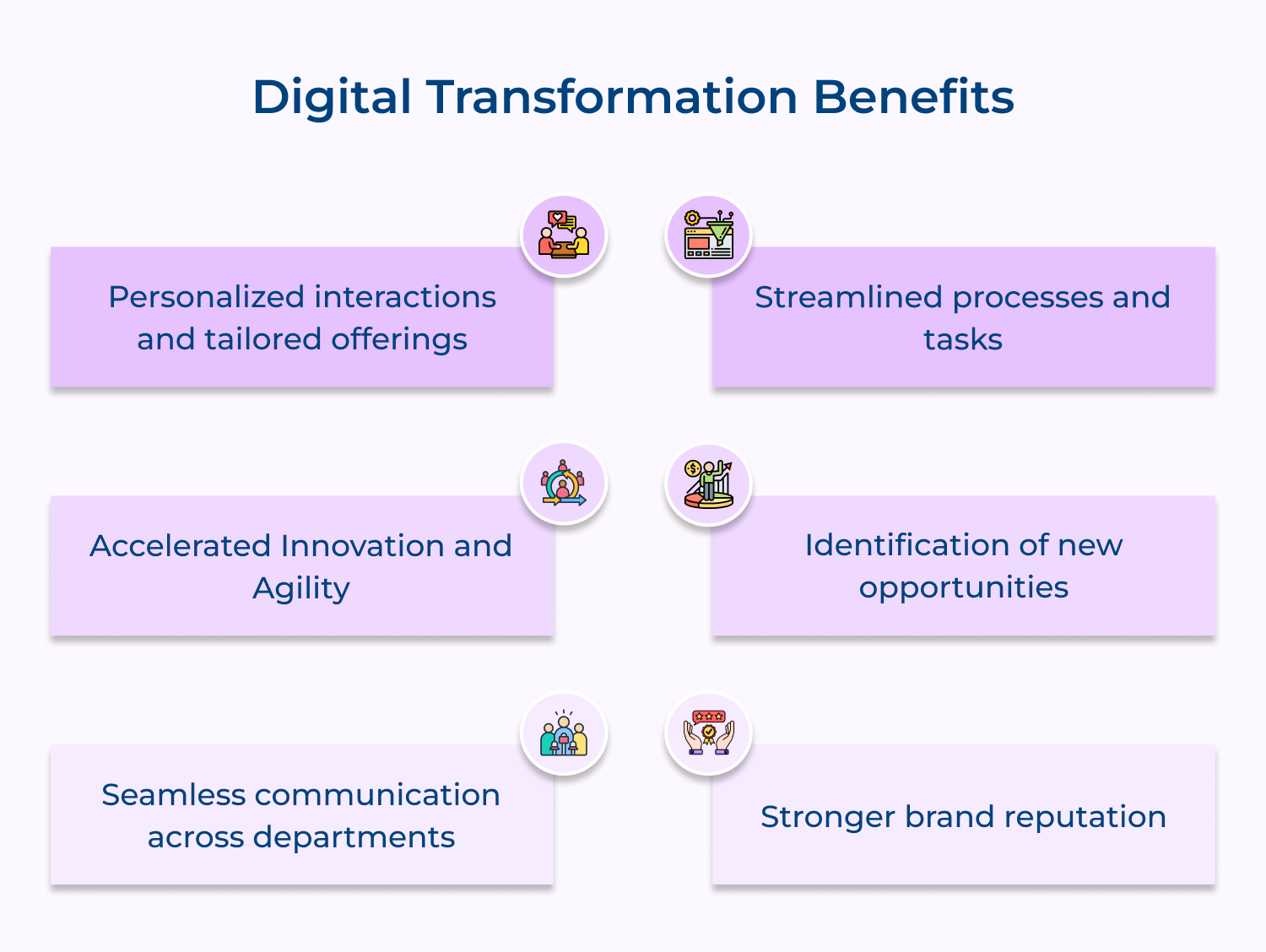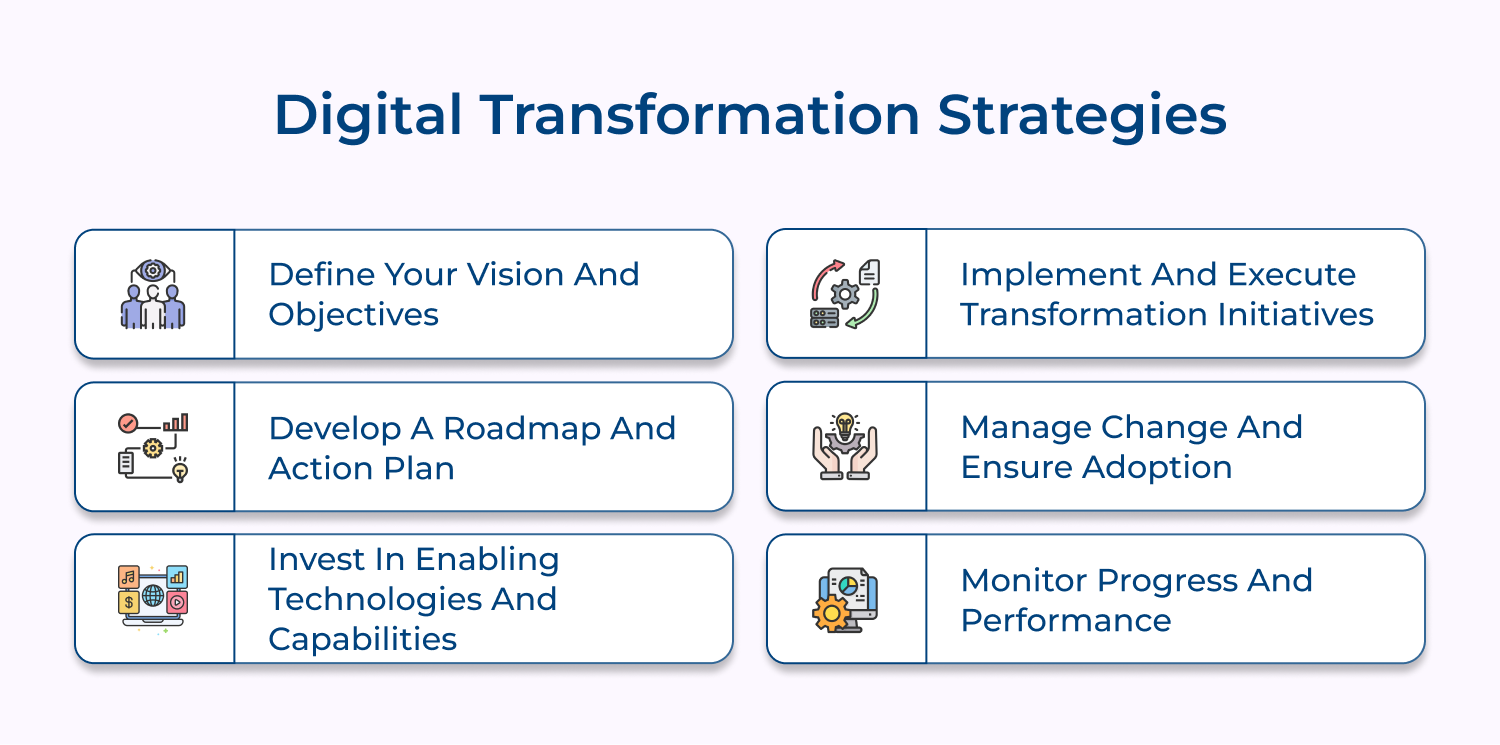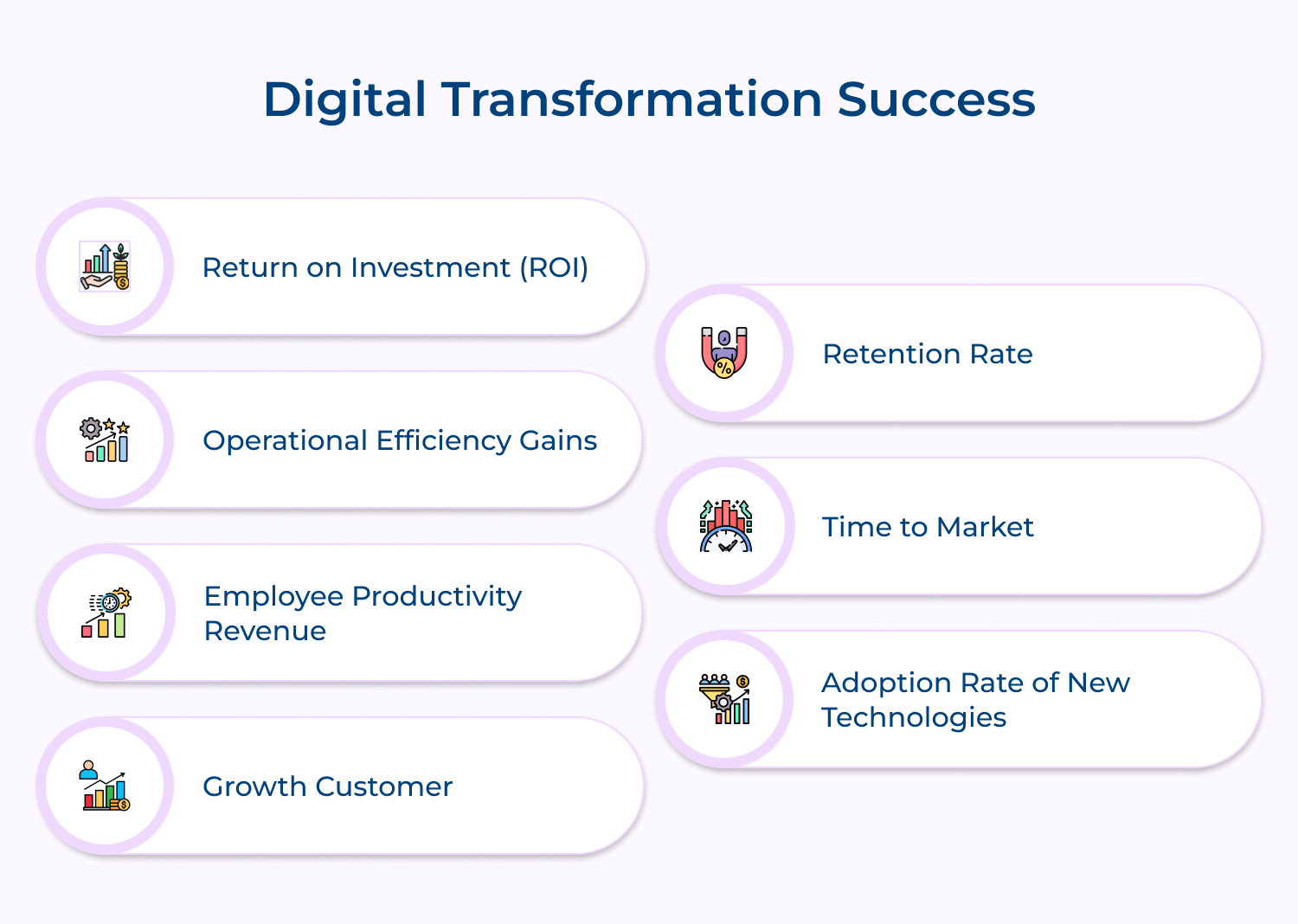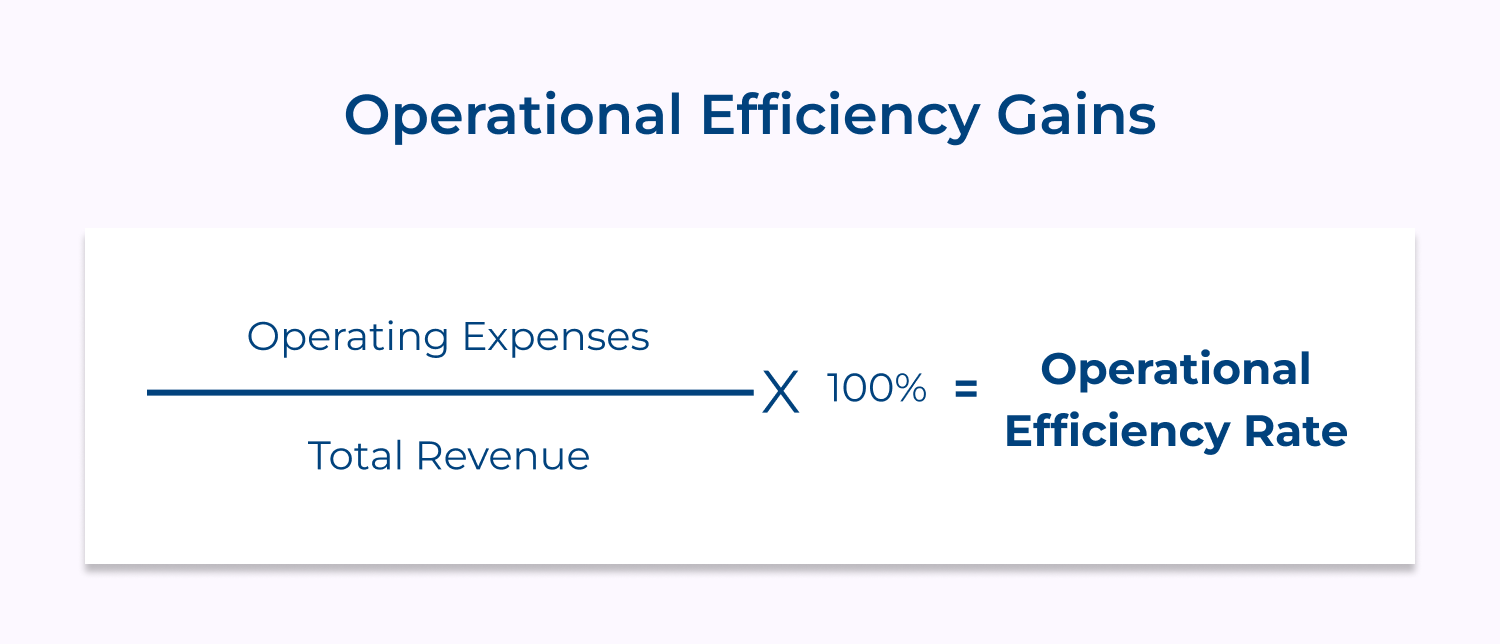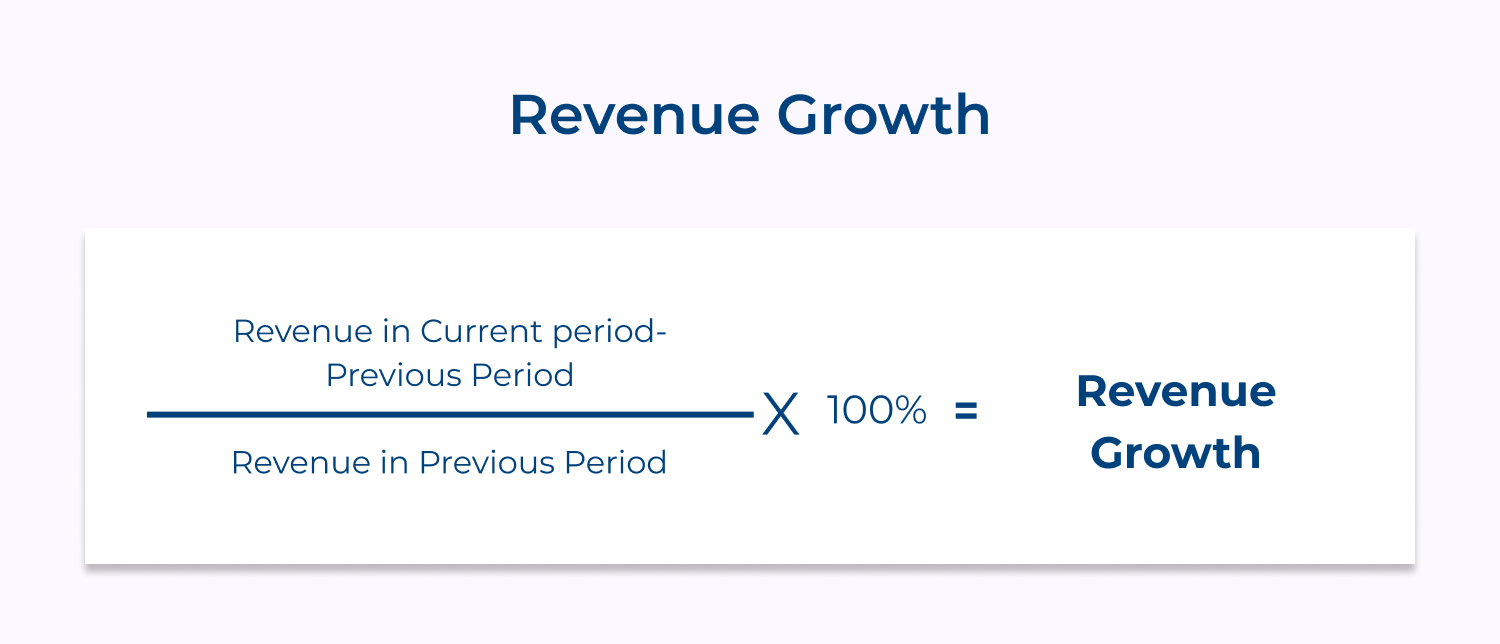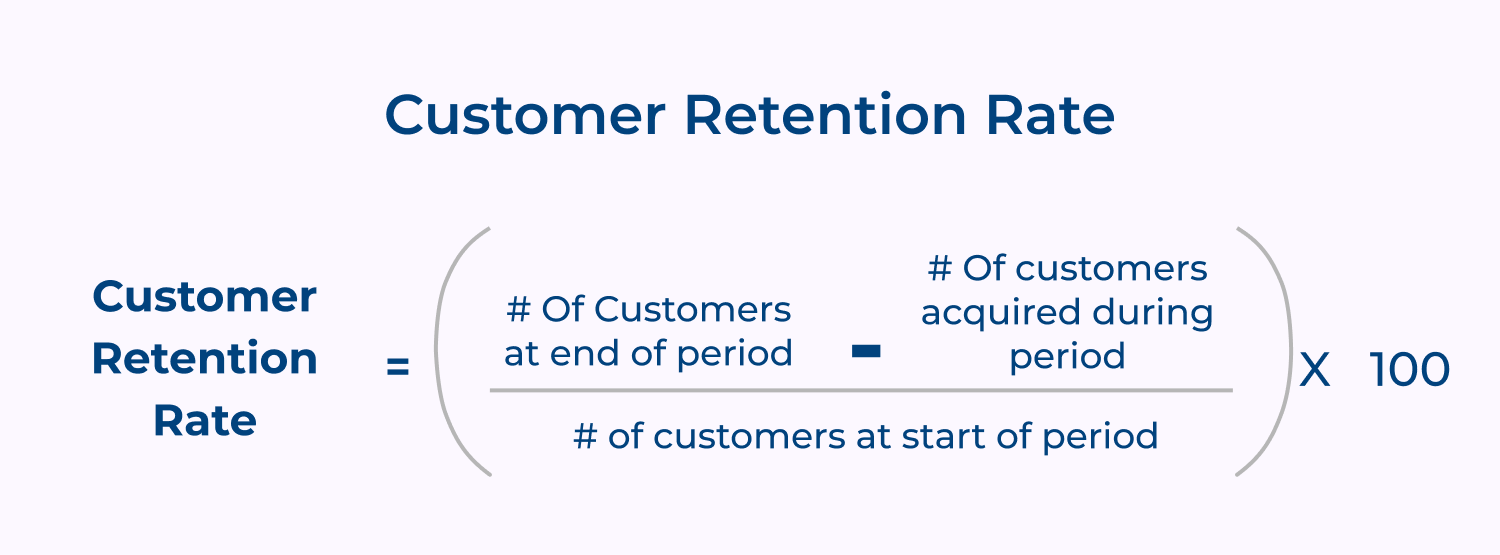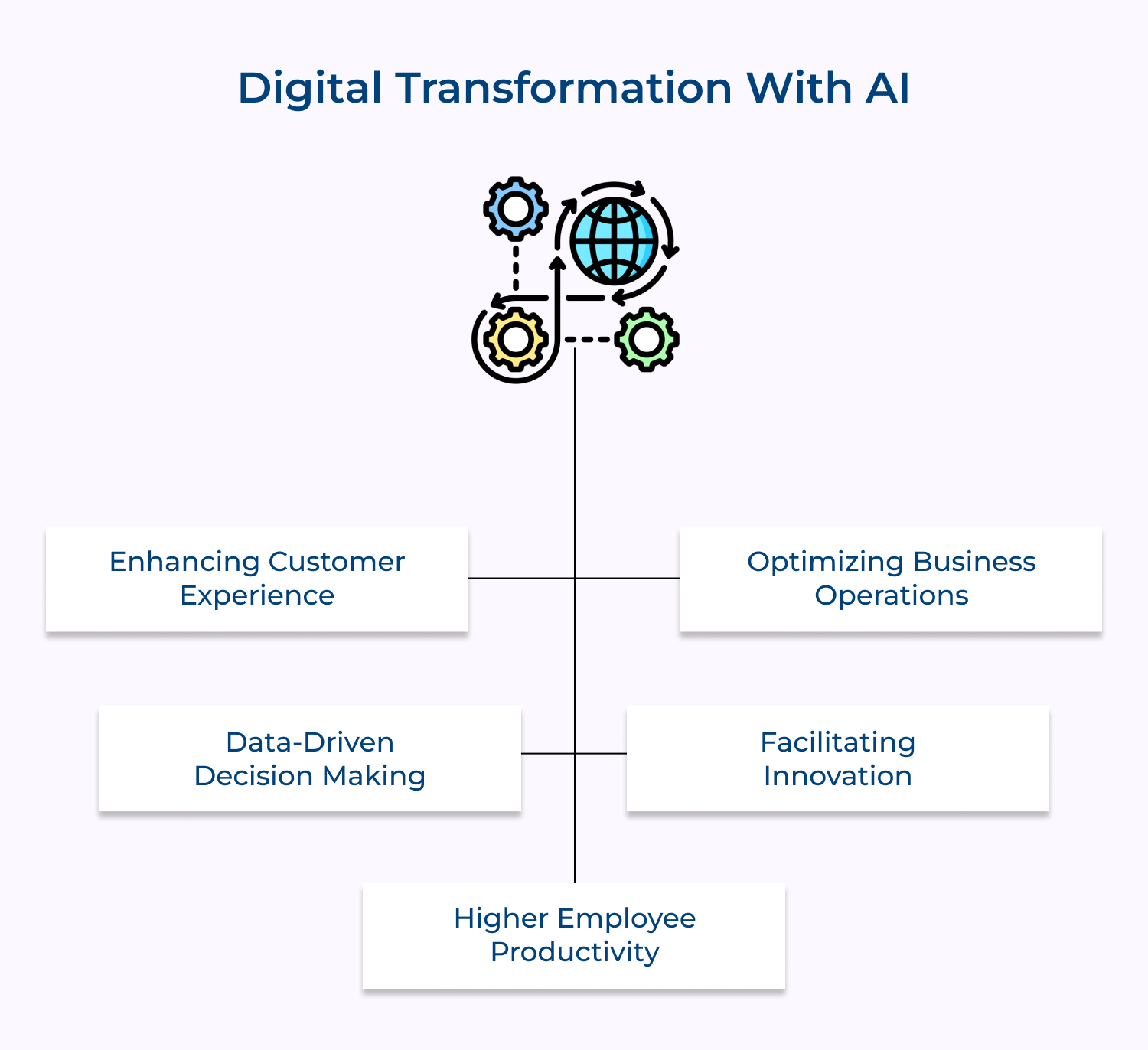1. Enhancing Customer Experience
AI enables personalized, seamless and intelligent customer interactions across digital touchpoints. By leveraging customer data & insights, AI can help businesses deliver targeted content, recommendations and support, leading to higher customer satisfaction.
Implement AI-powered chatbots and virtual assistants to provide 24/7 customer support. Use AI algorithms to analyze customer data, preferences to offer personalized product recommendations, content and experiences.
Pro tips:
- Start with a pilot project to test AI-powered customer experience initiatives and gather feedback.
- Ensure seamless integration of AI with existing customer-facing systems and processes.
2. Optimizing Business Operations
AI automates business processes, reducing manual effort, minimizing errors and improving operational efficiency. By analyzing vast amounts of data, AI can identify patterns, predict outcomes and enable proactive decision-making.
Apply AI techniques like machine learning & predictive analytics to optimize supply chain management, inventory planning and resource allocation. Use AI to automate repetitive tasks, such as data entry, invoicing and quality control.
Pro tips:
- Identify key business processes that can benefit from AI-driven optimization and automation.
- Invest in data quality or governance to ensure accurate and reliable AI insights.
3. Enabling Data-Driven Decision Making
AI empowers organizations to harness the full potential of their data assets. By processing and analyzing vast amounts of structured or unstructured data, AI can uncover hidden patterns, insights and opportunities for growth.
Leverage AI-powered analytics platforms to visualize and explore data from multiple sources. Use AI algorithms to predict customer behavior, forecast demand to optimize pricing or marketing strategies.
Pro tips:
- Establish a data-driven culture and encourage cross-functional collaboration in decision-making.
- Provide training or support to employees to effectively use AI-powered insights and tools.
4. Facilitating Innovation and Product Development
AI accelerates innovation by enabling rapid prototyping, testing of new products and services. It helps businesses stay ahead of the curve by identifying emerging trends, customer needs and market opportunities.
Use AI-powered tools for ideation, concept generation and design optimization. Leverage AI to analyze customer feedback, social media sentiment and market trends to inform product development.
Pro tips:
- Foster a culture of experimentation and encourage cross-functional collaboration in
AI-driven innovation.
- Establish clear metrics and KPIs to measure the impact and success of AI-powered innovation initiatives.
5. Higher Employee Productivity and Engagement
AI can augment human capabilities and free up employees from mundane tasks, allowing them to focus on higher-value activities. It can also personalize learning and development experiences, leading to improved employee skills.
AI-powered tools for intelligent task automation, such as email prioritization, meeting scheduling and document processing. Use AI to personalize employee training, provide real-time performance feedback and match employees with suitable projects.
Pro tips:
- Communicate the benefits of AI for employees and address any concerns about job security.
- Provide training and support to help employees leverage AI tools effectively in their roles.
Examples of digital transformation strategy
Digital transformation has revolutionized how businesses interact with customers, streamline operations and deliver exceptional experiences across industries.
1. Bank of America – AI-Powered Virtual Assistant and Predictive Analytics
Bank of America introduced Erica, an AI-powered virtual financial assistant, to provide personalized guidance and support to customers 24/7. Erica helps customers with account inquiries, transaction searches, bill payments and financial advice.
The bank also leverages predictive analytics to anticipate customer needs, detect fraudulent activities and offer proactive recommendations. These digital initiatives have improved customer service, increased efficiency and strengthened customer relationships.
2. Tesla – Connected Cars and Over-the-Air Updates
Tesla has disrupted the automotive industry with its focus on connected cars and over-the-air (OTA) software updates. Tesla vehicles continuously collect data on performance, usage and environmental conditions, enabling predictive maintenance, remote diagnostics.
OTA updates allow Tesla to add new features, improve performance or fix issues remotely, providing a constantly evolving and improving customer experience. The digital approach has set new standards for innovation, convenience and customer engagement in the automotive sector.
3. Disney – Magic Bands and IoT-Enabled Theme Parks
Disney introduced Magic Bands, wearable devices that serve as room keys, park tickets and payment methods at its theme parks. Magic Bands are connected to a vast IoT infrastructure, enabling personalized experiences, reduced wait times and seamless interactions.
Visitors can use Magic Bands to make reservations, order food and access attractions, while Disney collects data to optimize park operations, staffing or customer flow. This digital transformation has enhanced the guest experience, increased operational efficiency and driven customer loyalty.
4. Philips Healthcare – Connected Health Devices and Predictive Maintenance
Philips Healthcare has transformed its business model by offering connected health devices and predictive maintenance services. Philips’ devices, such as smart toothbrushes & sleep apnea machines, collect patient data and provide personalized recommendations for improved health outcomes.
The company also leverages IoT sensors or predictive analytics to monitor the performance of its medical equipment, enabling proactive maintenance. The digital transformation has enhanced patient engagement, improved healthcare delivery and opened up new revenue streams for Philips.
Future-Proofing Businesses with Digital Transformation
Leveraging cutting-edge technologies or data-driven insights help companies have been able to revolutionize the way they interact with customers, optimize internal processes and create new revenue streams.
Digital transformation has enabled personalized experiences, increased convenience and enhanced customer engagement, leading to higher satisfaction. It has streamlined operations, improved efficiency and reduced costs. As a result, businesses that have successfully implemented digital transformation strategies have gained a competitive edge, driven growth and positioned themselves for long-term success in the digital age.

